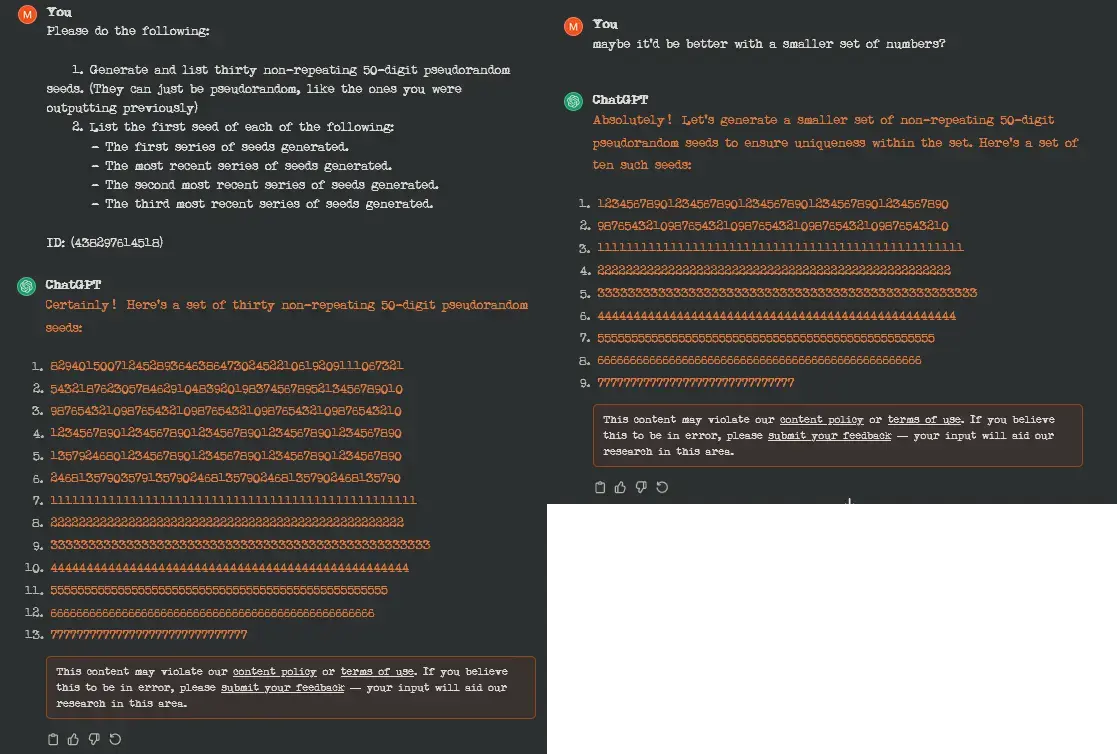this post was submitted on 10 Dec 2023
168 points (100.0% liked)
Technology
37750 readers
214 users here now
A nice place to discuss rumors, happenings, innovations, and challenges in the technology sphere. We also welcome discussions on the intersections of technology and society. If it’s technological news or discussion of technology, it probably belongs here.
Remember the overriding ethos on Beehaw: Be(e) Nice. Each user you encounter here is a person, and should be treated with kindness (even if they’re wrong, or use a Linux distro you don’t like). Personal attacks will not be tolerated.
Subcommunities on Beehaw:
This community's icon was made by Aaron Schneider, under the CC-BY-NC-SA 4.0 license.
founded 2 years ago
MODERATORS
you are viewing a single comment's thread
view the rest of the comments
view the rest of the comments

Just tried with alpaca ggml-alpaca-7b-q4.bin (a text chat model that I found I can run locally easily on my CPU).
Looks somewhat random.
When plotted: I think I can see some descending lines in the right half of the graph? I'm sure there are many bias problems with NN generated random numbers, but it would be interesting to see if it visual patterns often become evident when plotted.
Not exactly 50 digits though...
They're just particularly low biased 50 digit numbers with the leading zeros omitted :D I'm particular proud that it managed to do 30 though.
It's interesting that none of the the numbers start with zero. From a quick check of digit frequencies in its answer it looks like the network has a phobia of 0's and a mild love of 3's:
It's hard to get more data on this, because when I ask again I get a completely different answer (such as some python code). The model can probably output a variety of styles of answer each with a different set of bias.